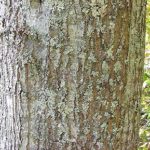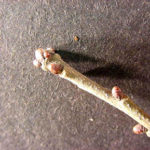water oak (Quercus nigra)
Family: Fagaceae
Categories |
Images |
|---|---|
| Form:
This is a medium sized tree reaching 70-100 ft in height and 3-4 ft in dbh. It has a rounded crown and a slender bole. |
|
|
Leaves: Shape: varies – spatulate, oblanceolate or shallowly 3-lobed Margin: bristle tipped Texture: glabrous above and rarely pubescent below Variation: pinnate |
|
| Bark:
The bark is uncharacteristically smooth and thin compared to most oak species. It develops shallow furrows with wide scaly ridges. |
|
| Twigs and Buds:
The twigs have a light reddish-brown color, and are slender and glabrous. The buds are covered in light brown scales. |
|
| Flowers and Fruit:
Acorns are ½ inch in height with cap covering 1/3 of acorn. |
|
| Distinguishing Characteristics:
It’s lower branches droop downward with age (ascending branches). Look for the small spatulate leaf shape. |
|
| Range:
It occurs north to New Jersey, south to northern Florida, and west into Oklahoma. |
|
| Silvics:
Water oak is intolerant to shade. It is a classic bottomland species that can sometimes be found on moist to mesic uplands as well, often when it is planted. |
|
| Ecological and Cultural Importance:
It is a valuable source of pulp and lumber. Acorns are eaten by waterfowl, wild turkey, and various other wildlife. |


